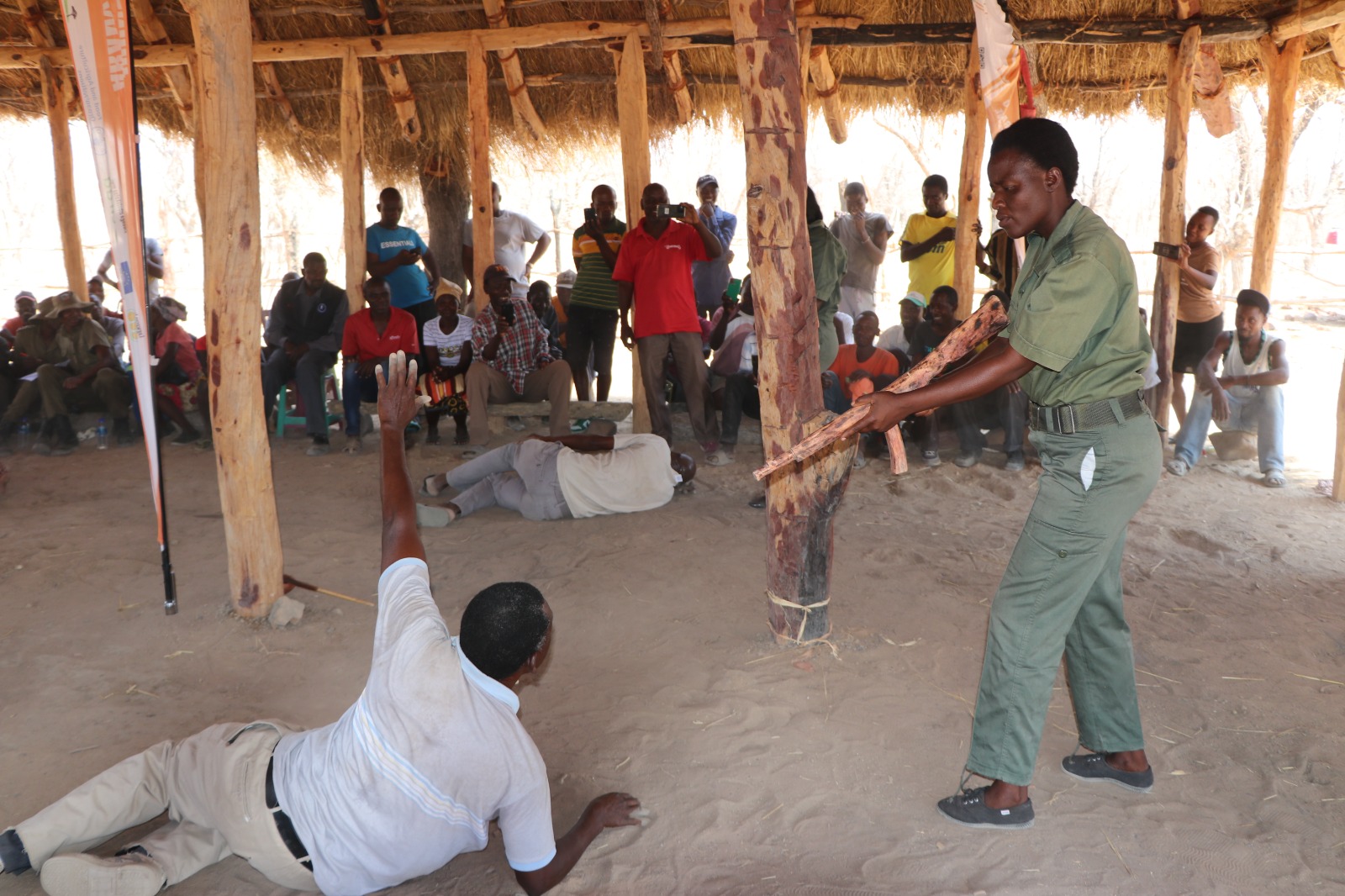Woman survives four bouts of TB to tell her story
Share

By Hebert Mutugwi
Harare (New Ziana) – After going through four separate bouts of tuberculosis infections, a Mabvuku woman has lived to
tell her story, thanks to the twin treatment for HIV and TB she has
undergone.
Treatment of the two conditions, which are closely linked, is now
compulsory for patients of either, thereby increasing the recovery and
survival rate of TB patients as the disease is known to kill more people
than HIV.
Fifty one year-old Barbra Farashishiko of Mabvuku, one of the country’s
TB champions, related her story this week at a two-day National Aids
Council (NAC) workshop for senior media personnel at the Zimbabwe
Institute of Public Administration and Management near Norton.
Farashishiko married into a Rusape farming family that was involved in
tobacco growing when she experienced constant coughing and breathing
difficulties, which everyone put down to the pregnancy she was carrying.
“It was in 1985 and I was pregnant but when I delivered, I became ill
and was admitted at Parirenyatwa Hospital and I developed complications
which prompted health personnel to carry out various tests to determine
the cause of my illness,” she said.
“They took chest X-rays but could not find anything wrong, tested my
phlegm but again nothing came out until they extracted fluid from my
spine (cerebrospinal fluid). That is when they realized I had TB and I
was immediately transferred to Wilkins Infectious Diseases Hospital
where I spent the next three months.”
She could not walk or feed herself and her mother had to visit every
lunch hour to feed and bath her.
“During my stay at Wilkins, there was a stay away by health personnel
and I had to be discharged and taken home and the scene (was depressing)
when I was being transported home in a wheel barrow from the bus stop,
with many pronouncing that my death was close by,” said Farashishiko.
“Imagine the stigma having to be transported in a wheel barrow for up to
2km with the whole neighbourhood peeping from every possible angle.”
At home, her siblings did not want anything to do with her for fear of
contracting TB so she was placed in an isolated room where food was left
by the door with only her father and mother standing by her.
“When my in-laws were advised to come and see me since I had been
discharged, my mother-in-law simply came, peeped into the room and
retreated. She went back to berate her son and started to actively
encourage him to dump me since according to her I was a moving grave and
was of no use to the family in the fields, tobacco barns and in terms of
household chores.”
After eight months of taking up to 20 tablets daily, she recovered
reasonably well to move back with her husband and fell pregnant and gave
birth to her third child the same day the second died, leading to her
relapsing.
“The child was not growing and I was sick, and (my) mother-in-law was
beside herself with anger and chided her son for continuing with me
against her advice. She concluded that I had TB2 but never got to know
how she reached that diagnosis. All I knew was that I had TB and this
time it had been confirmed through phlegm testing and X-rays,” she said.
The treatment for this phase of TB was tougher in that in addition to
the large amount of tablets Farashishiko was taking, she had to endure
daily injections for 60 consecutive days.
The third child died in 2008 and she demanded that the doctor explain to
her why she was always sick while her children continued dying. After 13
years of anguish, she was finally tested and her positive HIV status was
confirmed. Arrangements were then made to place her on Anti-Retroviral
Treatment (ART). This led to her quick recovery from TB, general
improvement in health and reintegration into the community.
Her husband then got stricken with TB and she had to take care of him
until he died, leading her to contract the condition for the fourth
time, but this time around treatment was relatively easy because she was
on HIV treatment and recovered within six months without any
complications. She has continued to religiously take her HIV treatment
and is enjoying good health now.
Dr Kelvin Charambira, the Infectious Diseases Detection Surveillance
(IDDS) Drug Resistant TB regional advisor, said Farashishiko was HIV
positive when she first developed TB in 1985 but testing was not
compulsory at the time because treatment for HIV was not available.
He said the link between HIV and TB and Drug Resistant TB was that TB
thrives when a patient’s immune system is compromised with HIV, which
compromises natural barriers against TB.
When a person does not have HIV, Dr Charambira said there is a five
percent risk of progression of the disease from infection to disease in
the first two years, which decreases during the rest of life. In HIV
positive people, there is between three and 13 percent risk of
progression from infection to disease in the first year, which increases
to more than 30 percent during the rest of life.
In cases where immunity falls below CD4 of 350, there are risks of new
infections, re-infection or reactivation of previous infection with TB
progression becoming faster and more deadly as shown by the fact that TB
is the leading cause of death in HIV patients.
Factors making TB/HIV deadlier include rapid progression of TB because
of immune response failure, delay in diagnosis and treatment due to
atypical and paucibacillary presentations, delay in HIV diagnosis due to
stigma or ignorance delaying the start of ARV treatment and difficulties
with adherence (drug interactions or high number of pills).
Because of the strong epidemiological association between TB and HIV, Dr
Charambira said there is now HIV screening in all TB patients and vice
versa in HIV patients.
New Ziana









